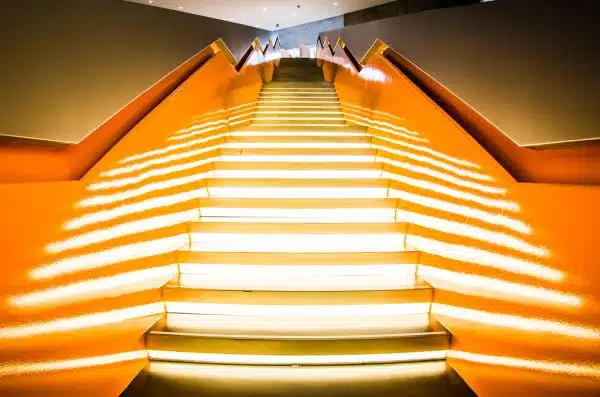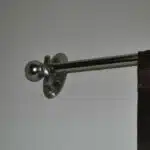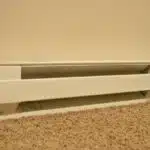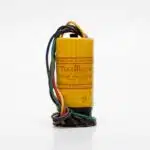As a handrail installation specialist, I have seen countless stairway accidents that could have been prevented with proper safety measures. Installing a handrail can make all the difference in ensuring that individuals can safely navigate stairs without risking falls or injuries. In this article, we will discuss the essential steps to installing a stairway handrail, including the tools required, materials needed, and safety precautions to consider.
Stairway handrails serve as an essential safety feature in any home or building. They provide support and stability for those ascending or descending stairs, especially for those who may have mobility issues or disabilities. Installing a handrail may seem like a daunting task, but with the right tools and knowledge, it can be done quickly and efficiently. By following these simple steps, you can ensure that your stairway is safe and secure for all who use it.
Assessing Your Stairway
As a handrail installation specialist, assessing your stairway is the crucial first step in ensuring a safe and sturdy handrail. Before diving into the installation process, it’s essential to assess your stairs’ condition and identify potential problems. Imagine a sailor checking their ship for leaks before setting sail on rough waters; that’s precisely what you need to do with your stairs.
Common mistakes occur when homeowners underestimate the importance of assessing their stairs or rush through this initial step. Failing to address underlying issues such as loose treads or uneven surfaces can lead to costly repairs down the line. Homeowners may also overlook safety considerations such as determining weight capacity or proper height placement, which can result in accidents.
When beginning your assessment, take note of any visible damage, such as cracks or wobbly steps, and ensure all treads are secure. Then consider safety factors such as the intended use of the handrail and who will be using it. By taking time to assess your stairway thoroughly, you’ll lay the foundation for a successful handrail installation that provides both stability and peace of mind.
As you complete your assessment, keep in mind that measuring for proper fit is critical to ensuring a safe and sturdy handrail. With accurate measurements in hand, you’ll be ready to move forward with selecting materials and preparing for installation.
Measuring For Proper Fit
Measuring techniques are crucial when it comes to installing a stairway handrail. Proper measurements ensure the handrail is positioned at the right height and angle, preventing accidents or injuries. To begin, determine the overall length of your handrail by measuring the total distance between the top and bottom of your stairs. This will give you an idea of how much material you need to purchase.
Proper placement of your handrail is also essential for safety purposes. The ideal height for a handrail is between 34 inches and 38 inches above the stairs’ nosing. The nosing refers to the part of each step that protrudes slightly beyond the riser, providing additional support for those using the stairs. Additionally, make sure that your handrail extends at least 12 inches past both the top and bottom steps for added stability.
By following these measuring techniques and ensuring proper placement of your handrail, you can prevent potential accidents and ensure maximum safety on your stairway. Once you have obtained accurate measurements, it’s time to move on to choosing your handrail material.
As a specialist in stairway handrail installation, I recommend using sturdy materials such as wood or metal when selecting a handrail material. These materials provide robust support while adding aesthetic value to any staircase design. In the next section, we will discuss different types of materials available in detail, helping you choose which one best suits your needs based on durability, maintenance requirements, cost-effectiveness, and style preferences.
Choosing Your Handrail Material
After measuring the staircase for proper fit, the next step in installing a handrail is choosing the material. However, before deciding on the material, it’s important to consider other factors such as durability and color.
Comparing handrail durability is an essential step in choosing which material to use. Some materials are more resilient than others and can withstand more wear and tear over time. For instance, metal handrails are known for their durability and can last for years without showing signs of wear. Wooden handrails, on the other hand, are susceptible to rotting and may require maintenance or replacement after some time.
Choosing handrail color is another crucial factor that should not be overlooked. Ideally, the color of your handrail should match or complement your stairs’ color scheme. This ensures that the overall look of your staircase is cohesive and aesthetically pleasing.
- When choosing a color for your handrail, consider using a contrasting hue for visual interest.
- If you have children or elderly individuals living in your home, opt for a brighter or more visible color to increase safety.
- Consider using a stain instead of paint if you want to retain the natural wood grain of your handrail.
- If you’re unsure about which color to choose, consult with a professional installer or interior designer for advice.
In summary, when installing a stairway handrail, it’s essential to consider both durability and color when selecting which material to use. By doing so, you’ll ensure that your staircase is not only safe but also visually appealing. In the next section, we’ll discuss gathering the necessary tools needed to install your chosen handrail material.
Gathering The Necessary Tools
- A measuring tape is essential for accurate measurements when installing a stairway handrail.
- A screwdriver and drill are required for drilling screw holes into wood or masonry.
- Drill bits should be of the correct size and material for the particular job being done.
- A stud finder is important to find wall studs for the handrail fittings.
- A level is used to make sure the handrail is installed at the correct angle.
- Fittings, wall anchors, screws, nuts, bolts, a wrench, hammer, nail set, and saw may all be necessary for the installation of a stairway handrail.
Measuring Tape
Using measuring tape effectively is a critical aspect of installing a stairway handrail. As a handrail installation specialist, I have learned that measuring tape is a tool that should never be underestimated. It measures the exact length of the handrail you need to install and ensures that it fits perfectly into place. Before beginning any installation, always make sure you have a reliable measuring tape with appropriate measurement increments.
When using measuring tape, there are several tips and techniques you can use to ensure your measurements are accurate. Firstly, ensure that the tape is taut and straight when taking measurements. Secondly, always measure twice to avoid unnecessary mistakes. Lastly, remember to take into account any irregularities in the staircase that may affect the length of the handrail needed.
To achieve an accurate measurement using a measuring tape, it’s important to hold it correctly and firmly without bending it or allowing it to sag. To do this, stand next to the staircase while holding one end of the measuring tape at one point on the rail where you want to install your handrail. Then extend the tape across the staircase while keeping it levelled against each step until you reach another point on the opposite end where you wish to fix your other support bracket.
In conclusion, using measuring tape correctly is essential for successfully installing a sturdy and secure stairway handrail. Remembering these simple tips can help ensure that your measurements are accurate every time: keep your tape taut and straight; measure twice for accuracy; and account for any irregularities in your staircase. By following these guidelines, you’ll be able to create an impressive-looking installation that meets all safety standards while providing optimal support for those who use your stairs.
Screwdriver
As a handrail installation specialist, gathering the necessary tools is an essential part of ensuring a successful and secure installation. One of the most crucial tools in handrail installation is the screwdriver. Using a screwdriver effectively can make all the difference when it comes to securing brackets and fixing screws into place.
When it comes to using a screwdriver, there are several types available, including flathead, Phillips head, and Torx head. It’s essential to have the correct type for each specific task as using the wrong size or type of screwdriver can damage screws or strip them, making them difficult to remove or replace.
To use a screwdriver correctly, hold it firmly with your dominant hand while positioning the tip of the screwdriver onto the top of the screw. Apply gentle pressure while turning clockwise until you feel resistance. Maintain this pressure while continuing to rotate until you reach your desired tightness level. Remember not to over-tighten screws as this could cause damage to both screws and brackets.
In conclusion, having a reliable screwdriver is critical for installing stairway handrails securely. Knowing which type of screwdriver to use for each task and how to use it effectively will ensure that your installation is safe and secure for those who use your stairs daily.
Drill
As a handrail installation specialist, gathering the necessary tools is crucial to ensure that the installation process is smooth and efficient. Another essential tool in handrail installation besides the screwdriver is the drill. There are several types of drills available, including corded and cordless drills, hammer drills, and impact drivers. Having the right type of drill for each specific task can make all the difference when it comes to securing handrails firmly.
There are different types of drills that you can use in handrail installation, and each one has its unique function. For instance, a corded drill is a powerful tool that requires an electrical outlet to function. On the other hand, a cordless drill runs on batteries and provides more flexibility as it allows you to move around without worrying about cords tangling up. Hammer drills are ideal for drilling into harder materials like concrete while impact drivers provide more force when driving screws into place.
Proper drilling technique is also critical in ensuring a secure and safe handrail installation. Before drilling any holes for brackets or screws, ensure that you have marked where they will go using a measuring tape or ruler. When drilling, start with a small pilot hole before gradually increasing the size to avoid damaging your walls or stairs. Avoid over-drilling as this could cause your screws to loosen over time, compromising your handrails’ stability.
In conclusion, having the right type of drill and using proper drilling techniques are vital in ensuring that stairway handrails are securely installed. As a handrail specialist aiming to serve others by providing safe and reliable installations, it’s essential always to have these tools ready when working on any project involving stairs or railings.
Preparing The Mounting Brackets
To prepare for the installation of a stairway handrail, it is essential to ensure that you have the correct mounting brackets. These brackets are what will hold the handrail securely in place and provide support for those using the stairs. Proper bracket placement is necessary to ensure that the handrail is installed safely and correctly.
Before you begin drilling holes for your mounting brackets, it’s important to carefully measure and mark where each bracket should be placed. This will help ensure that your handrail is level and secure. Once you have determined where each bracket should be placed, you can begin drilling holes into the wall using a drilling technique appropriate for the type of wall material you are working with.
Bracket placement and drilling technique are critical components of installing a stairway handrail. When done correctly, these steps will ensure that your handrail is properly secured to the wall and provides adequate support for those using the stairs. With careful attention to detail and proper installation techniques, anyone can successfully install a stairway handrail that meets safety standards and provides peace of mind for both homeowners and their guests.
As you prepare to attach the brackets to the wall, it’s important to keep in mind that proper installation is essential for ensuring that your handrail remains secure over time. The next section will cover best practices for attaching brackets to different types of walls, as well as tips on how to ensure that your handrail remains level and stable once it has been installed.
Attaching The Brackets To The Wall
Now that the mounting brackets are prepared, it’s time to move on to the next steps of installing a stairway handrail. First, let’s discuss the different types of brackets available in the market. The most common ones are wall-mounted brackets and post-mounted brackets. Wall-mounted brackets are screwed directly onto the wall, while post-mounted brackets are attached to a newel post or another support structure.
Once you have decided which type of bracket to use, it’s essential to determine proper bracket placement before installation. The height and angle of the bracket will affect how comfortable and secure the handrail is for users. Generally, mounting brackets should be placed at intervals of around 4-5 feet along a stairway, with additional supports at either end or where there is a change in direction.
Properly securing the handrail to the brackets is crucial for safety reasons. This will require drilling holes into both the bracket and handrail and attaching them using screws. It’s important to follow manufacturer instructions when doing this step as each type of bracket may require different methods for installation. With proper installation techniques and attention to detail, your stairway handrail will provide safety and security for years to come.
Securing The Handrail To The Brackets
As we move on to securing the handrail to the brackets, it’s important to ensure that all screws are tightly fastened. The handrail should be secured evenly across all brackets, with no visible gaps between the rail and the wall. This will make for a safe and sturdy handrail that can support weight as needed.
In addition to tightening screws, adjusting the angle of the handrail is also important. The angle should be adjusted so that it is comfortable for users to grip while ascending or descending the stairs. This will vary depending on factors such as height and arm length, so it’s important to take these into consideration when making adjustments.
It’s essential to take great care in securing the handrail properly, as this will affect how safe and sturdy it is over time. Once all screws have been tightened and the angle has been adjusted, we can move on to installing end caps. These caps will provide a finished look to your new stairway handrail, completing the installation process with style and professionalism.
Installing End Caps
After securing the handrail to the brackets, the next step is to install end caps. End caps serve as a protective barrier for the handrail, preventing injury and damage due to exposure. They come in various materials such as wood, metal, and plastic. The choice of material depends on the aesthetic preference and functional requirements of the user.
When installing end caps, it is important to ensure that they fit snugly onto the handrail. This can be achieved by sanding down any rough edges or uneven surfaces on the handrail. Sanding techniques vary depending on the material of the handrail but generally involve using sandpaper and a sanding block in a back-and-forth motion until smoothness is achieved.
Once the end caps are securely in place, attention should be given to sanding and finishing the handrail. This involves further smoothing out any imperfections on the surface and applying a protective coat to enhance durability and longevity. With proper installation and maintenance, a stairway handrail can provide safety and support for years to come.
To properly sand and finish your handrail, it’s important to follow specific steps for each type of material used in construction. These steps will vary depending on whether you’re working with wood or metal materials. For example, when working with wood you’ll want to use a fine-grit sandpaper followed by a clear finish sealant that will protect against wear over time. If you’re working with metal materials like stainless steel or aluminum then you may need to use specialized tools such as a wire brush or grinder before applying any type of coating for protection against corrosion or rusting.
Transition: Now that we’ve covered how to install end caps onto your stairway handrail let’s move onto discussing proper techniques for sanding and finishing your new addition so that it looks great while also providing essential safety features!
Sanding And Finishing The Handrail
As we approach the final stage of installing a stairway handrail, it is important to give proper attention to sanding and finishing the handrail. This process not only enhances the appearance of the handrail but also ensures its durability. Sanding involves removing any rough surfaces, scratches, or imperfections on the surface of the handrail. Once this is done, we can proceed to apply varnish or choose a paint color that complements the décor of your home.
Applying varnish is a common method used by many homeowners to finish their handrails. Varnish provides a protective layer that prevents moisture and other elements from damaging the wood. Before applying varnish, ensure that you have cleaned and sanded the surface properly. Use a brush or cloth to apply an even coat of varnish on the surface; allow it to dry before applying another coat. Repeat this process until you achieve your desired finish.
Choosing paint color is another option for finishing your handrail. When choosing paint color, consider factors such as lighting and wall color in your home. A contrasting color may be more suitable if you want your handrail to stand out while a matching color will blend in seamlessly with your walls. Ensure that you use high-quality paint and primer for longevity.
As we come to the end of this stage, it is important to note that testing the stability of your newly installed handrail should be done before use. Hold onto it firmly and apply pressure in different directions to ensure that it can support weight without wobbling or shaking. Once you are satisfied with its stability, you can confidently enjoy using your newly installed stairway handrail while ensuring safety for yourself and others who use it regularly.
Testing The Handrail For Stability
After installing the handrail, it is crucial to test it for stability before using it. Proper testing techniques ensure that the handrail will not collapse or detach from the wall when it is needed most. Safety should always be a top priority when installing and using a handrail.
To test the handrail’s stability, begin by applying pressure to different sections of the rail. Ensure that there is no excessive movement or wobbling in any area. Next, try pulling on the handrail with moderate force to check its attachment to the wall. If there is any movement or detachment, address these issues immediately before using the handrail.
It is essential to follow safety tips during testing to prevent accidents or injuries. Always wear appropriate protective gear such as gloves and goggles while testing the handrail. Also, make sure that any tools or equipment used during installation are removed from the area before testing begins. Remember, proper testing ensures a successful installation and prevents potential accidents in the future.
- Apply pressure to different sections of the rail
- Check for excessive movement or wobbling
- Pull on the handrail with moderate force
- Ensure attachment to wall
- Address any issues immediately
After testing for stability and addressing any issues or concerns, it is time to inspect other areas of concern such as lighting and flooring. These inspections ensure that all areas surrounding your newly installed stairway handrail are safe for use at all times.
Addressing Any Issues Or Concerns
As the saying goes, “An ounce of prevention is worth a pound of cure.” When it comes to stairway handrails, it’s vital to address any issues or concerns before they turn into major problems. Being proactive about safety considerations is the key to preventing accidents and injuries.
Common concerns when installing a stairway handrail include ensuring that it’s level and securely attached to the wall or railing. Additionally, it’s important to consider the type of material used for the handrail. Wood, metal, and composite materials all have different installation requirements and may require different maintenance routines.
Safety considerations are paramount when installing a handrail. The handrail should be positioned at an appropriate height for users and should not obstruct movement on the stairs. It’s also essential that the handrail can support the weight of users in case of a fall or slip. If you have any concerns about your ability to install a safe and secure handrail, be sure to consult with a professional installer who can provide guidance on best practices.
Transitioning into maintaining your handrail, regular upkeep is essential for ensuring its longevity and continued functionality. This includes cleaning regularly with gentle soap and water, avoiding harsh chemicals like bleach or ammonia that can damage surfaces over time. Additionally, inspecting your handrail annually for any signs of wear or damage can help prevent accidents before they happen. By taking care of your handrail from installation through maintenance, you’ll be able to enjoy its benefits for years to come.
Maintaining Your Handrail
Now that you have installed your stairway handrail, it is important to ensure its longevity by conducting regular maintenance checks. Regular maintenance helps prevent common problems that may arise over time, including loose screws, worn-out components, or cracked sections. The frequency of your maintenance checks will depend on the frequency of use and the material type of your handrail.
For wooden handrails, cleaning with a damp cloth and mild soap solution is necessary to prevent discoloration and staining. Avoid using abrasive materials such as steel wool or sandpaper which can damage the surface. For metal handrails, rust and corrosion can be prevented by applying a coat of rust-resistant paint or sealant. It is also essential to tighten any loose screws or bolts in both wooden and metal handrails to prevent wobbling or instability.
Other common problems include damage caused by daily wear-and-tear from constant usage or environmental factors such as sunlight exposure or moisture buildup. If you notice any cracks, chips, or breaks in your handrail components, consider replacing them promptly to avoid further deterioration. Additionally, if your handrail has been subjected to excessive force due to accidental impacts, it is crucial to inspect for structural integrity before using it again.
Ensuring code compliance is an essential aspect of maintaining the safety of your stairway handrail. Building codes dictate specific requirements for height and spacing between balusters and other features of handrails that must be followed during installation and ongoing maintenance. Regularly checking for compliance ensures that your handrail continues to meet these requirements and provides optimal protection for those who use it daily.
Ensuring Code Compliance
Code Compliance
When it comes to installing a handrail for your stairs, it’s essential to ensure that you comply with the relevant codes and regulations in your area. Code compliance is critical to ensure that your handrail is safe and meets the necessary standards. Failure to comply with these codes can result in fines or even legal action, so it’s crucial to get it right from the outset.
Safety Considerations
In addition to code compliance, safety should also be a top priority when installing a stairway handrail. A poorly installed handrail can be dangerous, especially if someone relies on it for balance while using the stairs. Therefore, it’s essential to take all necessary safety precautions during installation. These may include wearing appropriate protective gear and ensuring that the handrail is securely attached to the wall or other support structures.
Tips for Ensuring Code Compliance and Safety
Here are four tips for ensuring code compliance and safety when installing a stairway handrail:
- Research local building codes and regulations before starting the installation process.
- Use high-quality materials that are designed specifically for use in stairway handrails.
- Take accurate measurements before making any cuts or drilling any holes.
- Use appropriate hardware (such as screws, bolts, and brackets) to secure the handrail in place.
Seeking Professional Assistance
While installing a stairway handrail may seem like a straightforward process, there are many factors to consider regarding code compliance and safety concerns. If you’re unsure about any aspect of the installation process or lack experience with this type of work, seeking professional assistance is always an option. A professional installer can help ensure that your new stairway handrail meets all relevant codes and regulations while also providing peace of mind regarding its safety and reliability.
Seeking Professional Assistance
- Hiring a professional to install a stairway handrail can provide an individual with the assurance of a properly installed and safe product.
- In order to ensure a successful installation, it is important to research a qualified contractor who is experienced in the installation of handrails.
- The contractor should have the necessary knowledge and technical expertise to install the handrail in accordance with local building codes and regulations.
- Professional installation can provide a cost effective solution, as it minimizes the risk of costly mistakes or having to redo a project.
Benefits Of Hiring A Professional
As a professional handrail installation specialist, I understand the importance of ensuring the safety and security of your family and visitors. Installing a stairway handrail is not only crucial for preventing accidents, but it can also add an aesthetic appeal to your home. However, seeking professional assistance is highly recommended to ensure that the installation process is done accurately and efficiently.
One of the main benefits of hiring a professional for handrail installation is their experience in the field. With years of experience, they have encountered various challenges and have developed effective solutions to overcome them. This knowledge and expertise can save you time, money, and effort in the long run. A professional installer will also have access to high-quality materials and tools that are necessary for a durable and long-lasting handrail.
While cost considerations may deter some homeowners from seeking professional assistance, it’s important to consider the potential costs that may arise from DIY installation mistakes. Inaccurate measurements or improperly installed brackets can result in costly repairs or even injuries. Hiring a professional can help you avoid these risks while providing peace of mind knowing that your family’s safety is in good hands.
In conclusion, seeking professional assistance for installing a stairway handrail is highly recommended due to their experience and ability to provide high-quality work. While some may consider DIY options to cut costs, it’s important to weigh the potential risks involved with inaccurate installations. Ultimately, investing in a professional installer can save you time, money, effort, and most importantly ensure that your loved ones are safe in your home.
Researching A Qualified Contractor
When seeking professional assistance for handrail installation, it’s important to research qualified contractors who can offer high-quality work. This hiring process involves conducting contractor interviews to ensure that the installer has the necessary skills and experience to complete the job accurately and efficiently. A reputable contractor will also have a portfolio of their past work which can provide insight into their level of craftsmanship.
During contractor interviews, it’s important to ask questions about their experience with handrail installations, their knowledge of local building codes and regulations, and their availability to complete the job within your desired timeline. Additionally, it’s recommended to ask for references from previous clients and follow up with them to gauge their satisfaction with the contractor’s work. This research can help you make an informed decision when selecting a qualified contractor for your handrail installation needs.
In conclusion, researching a qualified contractor is an essential step in seeking professional assistance for handrail installation. The hiring process involves conducting thorough contractor interviews and reviewing past work portfolios to ensure that the installer has the necessary skills and experience. By investing time into this process, you can rest assured that your handrail installation will be completed accurately, efficiently, and safely by a reputable professional.
Enjoying Your Safe And Stylish Handrail
Seeking professional assistance for installing a handrail is always recommended, but with the right tools and knowledge, it can be done on your own. Now that you have installed a sturdy and secure handrail, it’s time to enjoy its safety features and stylish design.
When it comes to handrail design, there are various styles to choose from. The most common designs include round or square tubing in metal or wood materials. You can also opt for a modern look by choosing glass or cable fittings. Whichever design you choose, make sure it meets safety standards and complements the overall aesthetic of your staircase.
Safety features are crucial when installing a handrail. The height of the handrail should be between 34-38 inches above the stair tread and extend at least 12 inches beyond the top and bottom steps. It’s essential to ensure that the handrail is securely attached to the wall or post using sturdy brackets or screws. Regular maintenance checks should also be conducted to ensure that the handrail remains secure over time.
| Handrail Material | Pros | Cons |
|---|---|---|
| Wood | Classic look, easy to customize | Requires regular maintenance, prone to wear and tear |
| Metal | Durable, low maintenance | Limited customization options |
| Glass/Cable fittings | Modern look, unobstructed view | Expensive, requires professional installation |
By following these guidelines and incorporating safety features into your installation process, you can enjoy your new handrail without any worries about accidents or injuries. Remember that safety should always come first when it comes to home improvement projects like this one.
Conclusion
When it comes to installing a stairway handrail, it is important to assess your staircase and measure for proper fit before choosing the material that best suits your needs. Gathering the necessary tools and preparing the mounting brackets are also crucial steps in the installation process. It is equally important to ensure code compliance and seek professional assistance if needed.
Once your handrail is installed, proper maintenance will keep it looking stylish and functioning safely for years to come. As a handrail installation specialist, I understand the importance of both safety and style in a handrail. That’s why I encourage you to ask yourself: is my stairway safe without a handrail? The answer may be obvious, but taking action to install one can make all the difference in preventing accidents and adding value to your home or business. Don’t wait until it’s too late – take the necessary steps to install a safe and stylish handrail today.
Image Credits
- “illuminated stairway with orange handrails” by Schub@ (featured)





























